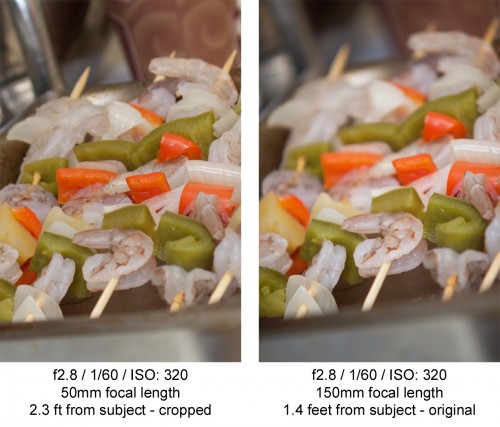This is a guest post by New Jersey wedding photographer, Julianne Markow. Check out her photography blog here too.
Bokeh is something that makes non photographers say to you “Wow, that is an amazing photograph,” and the professionals tend to agree with them. The definition of bokeh is simply “blur” and comes from the Japanese word boke, meaning “blur quality.” Bokeh is really just a fancy way of saying that a photograph is aesthetically appealing by having a shallow depth of field.
Bokeh must be done right. It is not difficult to set your camera up to do some of the work for you, but if you don’t follow these 5 tips, your results may be less than desirable.
Open your lens up wide. This goes without saying. Many DSLR cameras come with a kit lens that varies from f/3.5-5.6, this means that at your shortest zoom level you can set your aperture to f3.5 and as you zoom into the subject, the aperture will change to f5.6. A 2.8 lens or faster is of course desirable, but if this is too much for your pocket to handle, remember a 5.6 kit lens can go a long way if you follow the next simple tip…
Get in close. Photographers are always afraid to get in close to their subject and figure that they will crop it later if it doesn't look right. The problem with using this safety net when you are trying to achieve great bokeh, is that the lens reacts differently at different focal lengths, as well as your actual distance to the subject. The closer you are to the subject your are photographing, the less depth of field you will have… so even if you have your f number set at 2.8 at 50mm and the same at 105mm, the resulting blur will vary. Cropping it later is not the easy fix. If you want great bokeh, you have to be daring!

Photos by Julianne Markow
Lines, Lines, Lines! Lines that are directed toward your subject can really make for an interesting composition and can also help control the blur. Remember, it’s not only the background that you may want to have blurred, but sometimes, the objects leading up to the subject can really make an impact when bokeh is done properly. You can almost always achieve great bokeh if you include lines in your photograph.
Photo by Julianne Markow
Don't ignore your background. Sometimes the difference between a good photograph and a great one is what is in the background, and not the subject its self. Too many photographers assume that since they are attempting to blur the background, they don’t have to worry about what is in it? Well, different shapes, colors, and light sources blur differently. Don’t be afraid to put the subject in the back ground either, if it’s done right, the effect can be pretty interesting.
Photo by Julianne Markow
Photo by Julianne Markow
Don’t think it is something you can manipulate in post processing… because if it is not done right, its really, really wrong. Alien Skin Bokeh is a great program, and I am not trying to discourage anyone from using it. If you have no choice but to achieve bokeh in post processing, by all means purchase this program. However since this tutorial is about achieving bokeh in the camera, I recommend you learn to do it this way this first. Learning to do things right in the first place saves you time in post processing… and will almost always look better.
If you are still looking for something to enhance your bokeh, think about purchasing a lensbaby. These small, odd looking lenses are great tools to raise the creativity level in your photographs. They allow for a “sweet spot” so you can control where the bokeh is in the photograph… While this kind of “sweet spot” bokeh can be manipulated in post processing, like traditional bokeh, the only way for it to look right is if it is done right in the first place.
Photo by Julianne Markow
Photo by Julianne Markow











4 Comments
Hi,
Sorry – the focal lengths in the first example has to be mixed up, right?
Hello A,
No they are not, as you can see the first one on the left is cropped to be framed the same way as the “original” un-cropped image on the right. I was showing that the focal length on the right, being zoomed in all the way and being as physically close to the subject will give a more appealing blur than the image on the left for which the focal length was shorter but used the same settings… I had to crop it later and even then, the blur was not as appealing.
These techniques are very popular at weddings, especially for pictures of the bride & groom, and for close-ups of things like the rings and shoes
Hello! Thanks for the heads up!